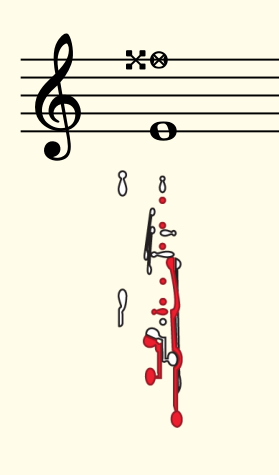Continuing from my previous post in the long-awaited documentation of tárogató multiphonics, I’m starting with the two multiphonics employed in Jeffrey Ryan’s Arbutus for tárogató and piano (who incidentally I just discovered was nominated for a Western Canadian Music Award nomination, Classical Composer of the Year 2021).

The second multiphonic is considerably easier to sound (i.e., it’s more stable than its predecessor) even though it is fingered quite closely to the other. The upper note is not a true F sharp but is in fact an F quarter sharp (a flat sharp, as it were). Notation-wise, it’s a sharp that makes you think perhaps your printer has dropped a cog or some crawling insect has met its end on your manuscript.
Once again, the fingering system is the German one although it could work on the French system, I just haven’t tested it. In any case, tárogatós are hardly systematized so it may not matter at all. For all I know I could be the only benefactor of this documentation. Having worked these past twenty years as a technical writer, it wouldn’t be first time writing documentation for an audience of one — or none.
Below is what the multiphonic sounds like, and I’ve also included a link to the recording of Arbutus for tárogató and piano allowing you also to listen to this multiphonic in context with the composition: Listen to Arbutus on YouTube (I’ve cued it up to where the multiphonic is played).